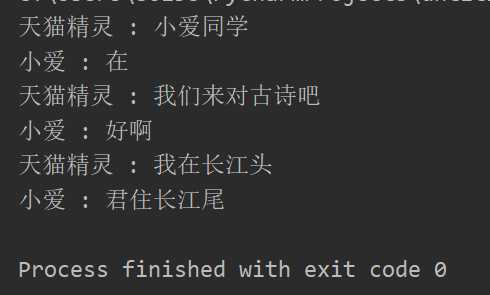(1)Lock
import threading from threading import Lock total = 0 lock = Lock() def add(): global total global local for i in range(100000): lock.acquire() # lock.acquire() #如果再加把锁会产生死锁 total += 1 lock.release() def desc(): global total global local for i in range(100000): lock.acquire() #获取锁 total -= 1 lock.release() #释放锁 thread1 = threading.Thread(target=add) thread2 = threading.Thread(target=desc) thread1.start() thread2.start() thread1.join() thread2.join() print(total) #0
(2)RLock
RLock:在同一个线程里面,可以连续多次调用acquire,一定要注意acquire和release的次数相等
import threading from threading import Lock,RLock total = 0 lock = RLock() def add(): global total global local for i in range(100000): #用RLock在同一线程里面,可以多次调用acquire,不会产生死锁 lock.acquire() lock.acquire() total += 1 #release的次数和acquire的次数相等 lock.release() lock.release() def desc(): global total global local for i in range(100000): lock.acquire() #获取锁 total -= 1 lock.release() #释放锁 thread1 = threading.Thread(target=add) thread2 = threading.Thread(target=desc) thread1.start() thread2.start() thread1.join() thread2.join() print(total) #0
使用condition模拟对话
import threading from threading import Condition #通过condition,完成协同读诗 class XiaoAi(threading.Thread): def __init__(self,cond): super().__init__(name=‘小爱‘) self.cond = cond def run(self): with self.cond: #等待 self.cond.wait() print("{} : 在".format(self.name)) #通知 self.cond.notify() self.cond.wait() print("{} : 好啊".format(self.name)) self.cond.notify() self.cond.wait() print("{} : 君住长江尾".format(self.name)) self.cond.notify() class TianMao(threading.Thread): def __init__(self,cond): super().__init__(name="天猫精灵") self.cond = cond def run(self): with self.cond: print("{} : 小爱同学".format(self.name)) self.cond.notify() self.cond.wait() print("{} : 我们来对古诗吧".format(self.name)) self.cond.notify() self.cond.wait() print("{} : 我在长江头".format(self.name)) self.cond.notify() self.cond.wait() if __name__ == ‘__main__‘: cond = threading.Condition() xiaoai = XiaoAi(cond) tianmao = TianMao(cond) xiaoai.start() tianmao.start()
结果:

控制线程并发数量
#samaphore是用于控制进入数量的锁 import threading import time class htmlSpider(threading.Thread): def __init__(self,url,sem): super().__init__() self.url = url self.sem = sem def run(self): time.sleep(2) print("got html text success!") self.sem.release() #释放锁 class UrlProducer(threading.Thread): def __init__(self, sem): super().__init__() self.sem = sem def run(self): for i in range(20): self.sem.acquire() #加锁 html_htread = htmlSpider("baidu.com/{}".format(i), self.sem) html_htread.start() if __name__ == ‘__main__‘: #控制线程并发数量为3 sem = threading.Semaphore(3) url_producer = UrlProducer(sem) url_producer.start()
线程池
from concurrent.futures import ThreadPoolExecutor, as_completed import time #为什么要线程池 #主线程中可以获取某一个线程的状态或者某一个任务的状态,以及返回值 #当一个线程完成的时候,主线程立马知道 #futures可以让多线程和多进程编码接口一致 def get_html(times): time.sleep(times) print("get page {} success".format(times)) return times executor = ThreadPoolExecutor(max_workers=2) #通过submit提交执行的函数到线程池中,sumbit是立即返回 task1 = executor.submit(get_html, (3)) #函数和参数 #done方法用于判定某个任务是否完成 print(task1.done()) #False time.sleep(4) print(task1.done()) #True #result方法查看task函数执行的结构 print(task1.result()) #3
用as_completed获取任务结束的返回
from concurrent.futures import ThreadPoolExecutor, as_completed import time #为什么要线程池 #主线程中可以获取某一个线程的状态或者某一个任务的状态,以及返回值 #当一个线程完成的时候,主线程立马知道 #futures可以让多线程和多进程编码接口一致 # def get_html(times): # time.sleep(times) # print("get page {} success".format(times)) # return times # # executor = ThreadPoolExecutor(max_workers=2) # # #通过submit提交执行的函数到线程池中,sumbit是立即返回 # task1 = executor.submit(get_html, (3)) #函数和参数 # # #done方法用于判定某个任务是否完成 # print(task1.done()) #False # time.sleep(4) # print(task1.done()) #True # #result方法查看task函数执行的结构 # print(task1.result()) #3 def get_html(times): time.sleep(times) print("get page {} success".format(times)) return times executor = ThreadPoolExecutor(max_workers=2) #获取已经成功的task的返回 urls = [3,2,4] all_task = [executor.submit(get_html, (url)) for url in urls] for future in as_completed(all_task): data = future.result() print(data) #已经成功的task函数的return
Queue
import time from multiprocessing import Process, Queue def producer(queue): queue.put("a") time.sleep(2) def consumer(queue): time.sleep(2) data = queue.get() print(data) if __name__ == ‘__main__‘: queue = Queue(10) my_producer = Process(target=producer, args=(queue,)) my_consumer = Process(target=consumer, args=(queue,)) my_producer.start() my_consumer.start() my_producer.join() my_consumer.join()
Manger
import time from multiprocessing import Process, Queue, Manager,Pool def producer(queue): queue.put("a") time.sleep(2) def consumer(queue): time.sleep(2) data = queue.get() print(data) if __name__ == ‘__main__‘: #pool中的进程间通信需要使用manger中的queue queue = Manager().Queue(10) pool = Pool(2) #创建进程池 pool.apply_async(producer, args=(queue, )) pool.apply_async(consumer, args=(queue, )) pool.close() pool.join()
pipe实现进程间通信(只能两个进程之间)
#Pipe进程间通信 from multiprocessing import Process, Pipe def producer(pipe): pipe.send("derek") def consumer(pipe): print(pipe.recv()) if __name__ == ‘__main__‘: receive_pipe, send_pipe = Pipe() my_producer = Process(target=producer, args=(send_pipe, )) my_consumer = Process(target=consumer, args=(receive_pipe, )) my_producer.start() my_consumer.start() my_producer.join() my_producer.join()
原文:https://www.cnblogs.com/derek1184405959/p/11392029.html